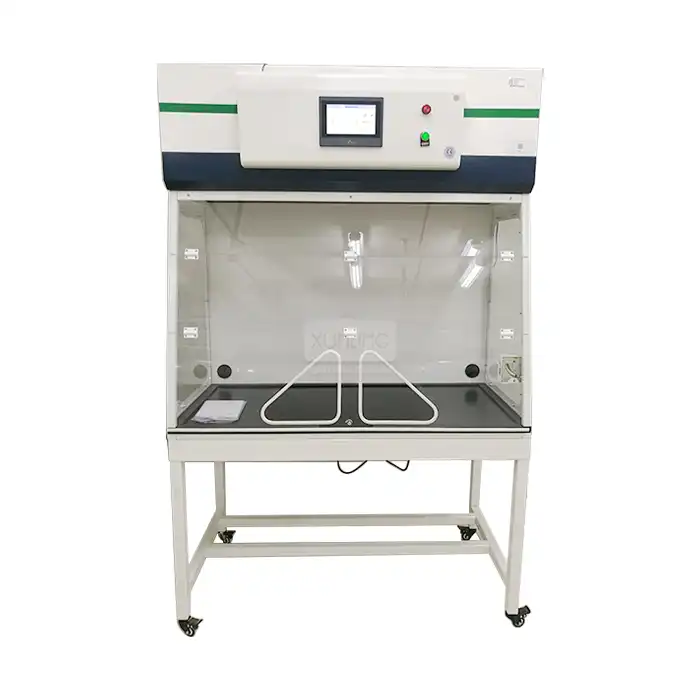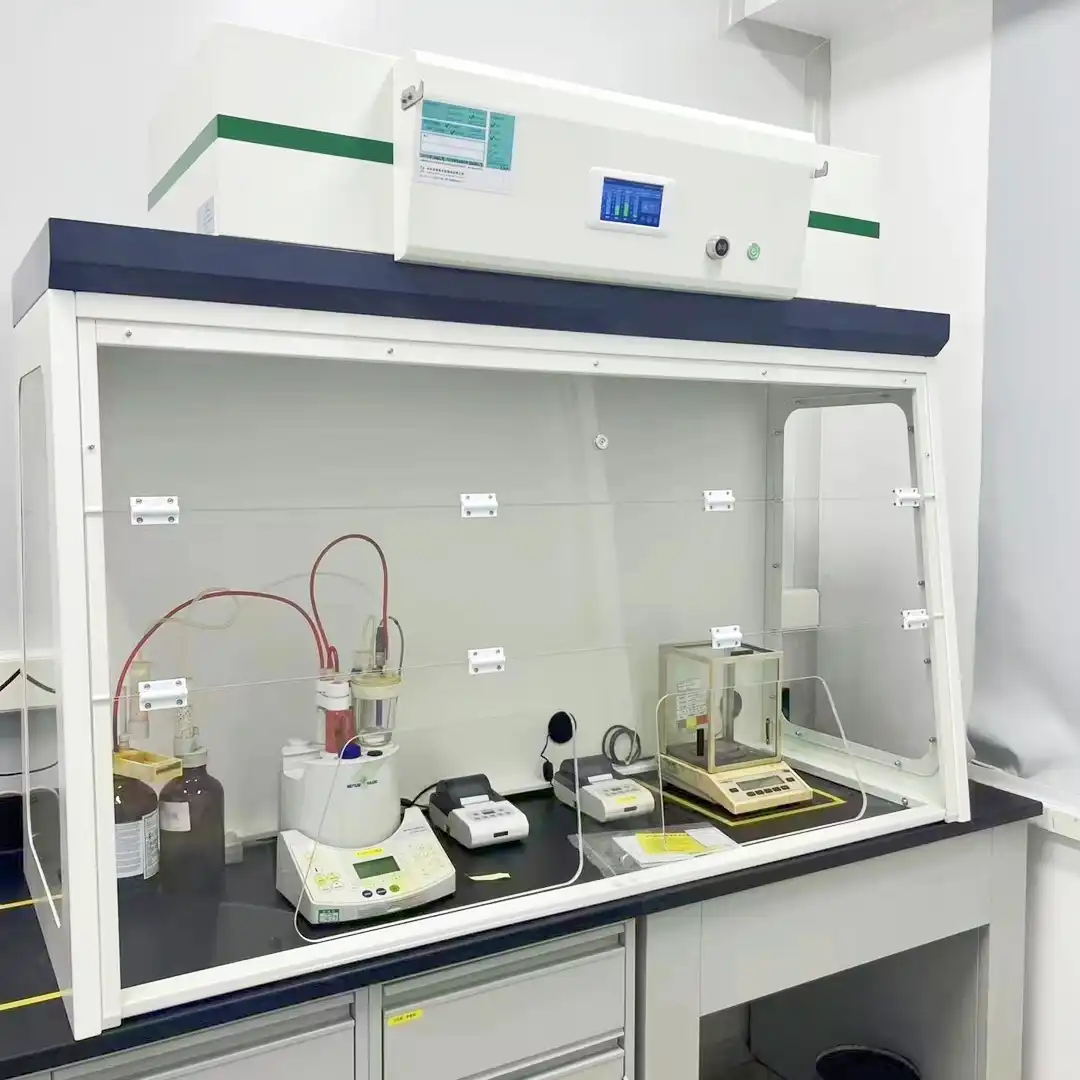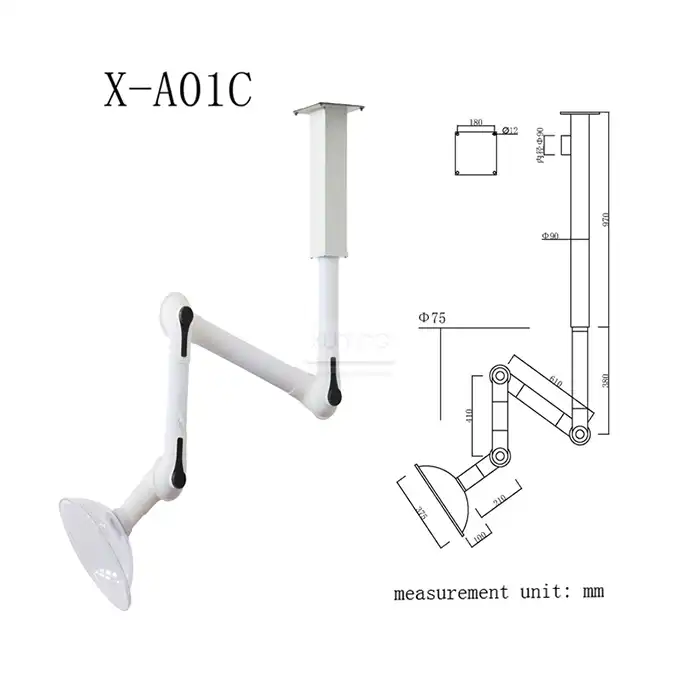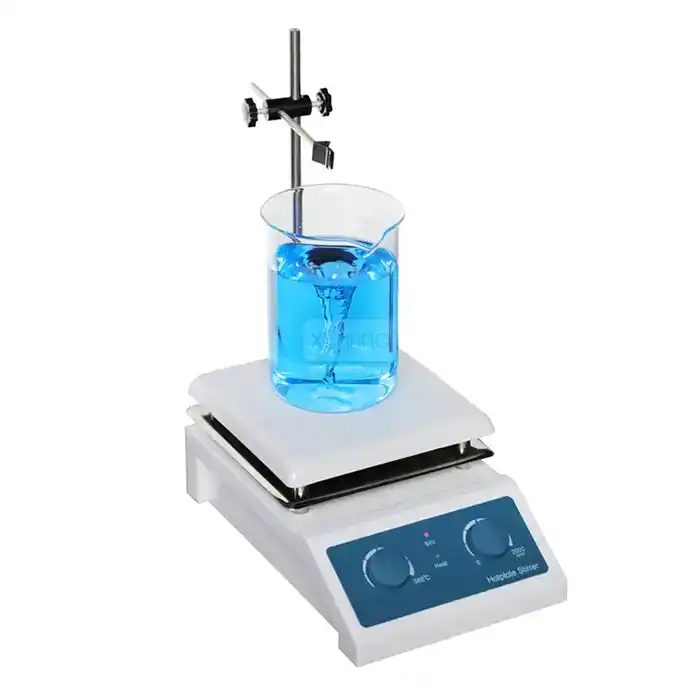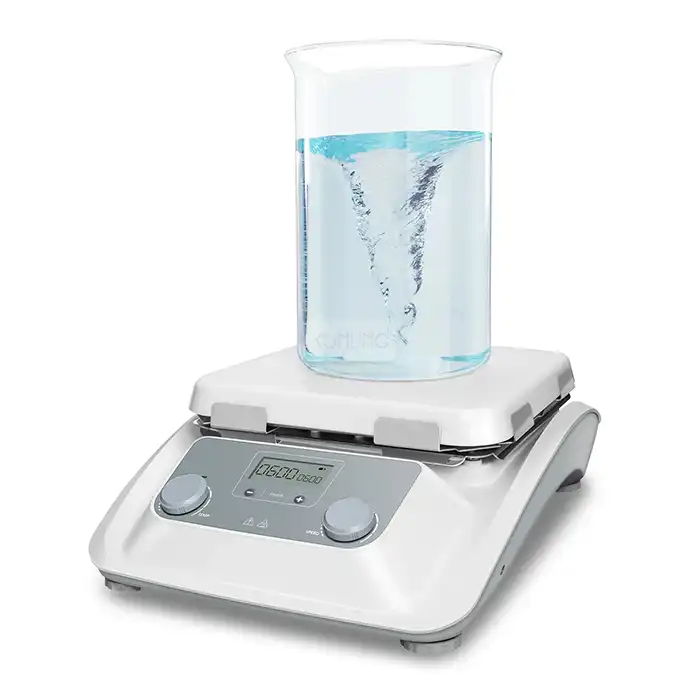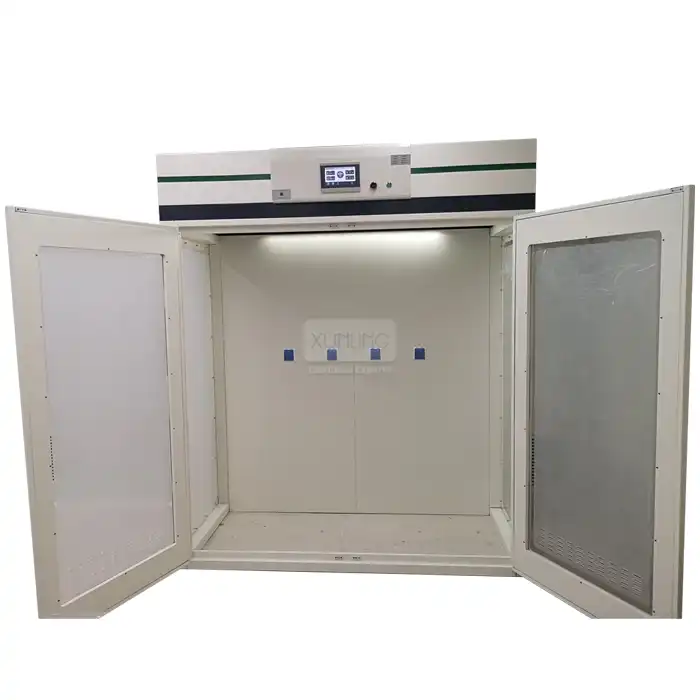
Can a benchtop fume hood be used for all types of chemicals?
2025-05-05 09:55:15
When setting up a laboratory, safety equipment selection is paramount, particularly when it comes to managing chemical hazards. Benchtop Fume Hoods are popular ventilation solutions for many labs, but a common question arises: can these compact units handle all chemical types? This comprehensive guide explores the capabilities and limitations of benchtop fume hoods for various chemical applications, helping laboratory managers make informed decisions about their safety equipment investments.
Understanding Benchtop Fume Hoods and Chemical Compatibility
The Purpose and Design of Benchtop Fume Hoods
Benchtop fume hoods, also known as tabletop or desktop fume hoods, are compact ventilation systems designed specifically for laboratories with space constraints. Unlike traditional full-sized fume hoods that extend from floor to ceiling, benchtop fume hoods are smaller units that sit directly on laboratory workbenches or tables. These specialized ventilation devices are engineered to capture, contain, and remove hazardous fumes, vapors, and particles generated during laboratory procedures. The primary function of a benchtop fume hood is to protect laboratory personnel by creating a physical barrier between them and potential chemical hazards while simultaneously drawing air away from the workspace and exhausting it outside the building or through filtration systems. The design typically features a transparent sash that can be raised or lowered, creating a controlled work environment within. Modern benchtop fume hoods from Xi'an Xunling Electronic Technology incorporate sophisticated airflow management systems, including three-section baffle systems that ensure proper air distribution and maintain constant face velocity. These compact units are ideal for small-scale operations but require careful assessment when considering the types of chemicals to be used within them. Their sophisticated by-pass airflow design with variable air volume compatibility ensures efficient ventilation even in limited spaces, making them valuable safety assets for many laboratory settings.
Chemical Classification and Compatibility Considerations
When evaluating whether a benchtop fume hood can safely handle specific chemicals, understanding chemical classification systems is essential. Chemicals in laboratory settings are typically categorized based on their hazardous properties, including toxicity, flammability, corrosiveness, and reactivity. Highly toxic substances require more stringent containment measures, while flammable chemicals demand specialized ventilation to prevent concentration buildup that could lead to fire or explosion. Corrosive chemicals, such as strong acids and bases, necessitate fume hood construction materials that resist chemical attack. Xi'an Xunling's benchtop fume hoods feature chemical-resistant fume hood liners and baffles, with removable components for easy cleaning and maintenance. The construction materials include 1.0mm full-thickness high-quality cold-roll steel sheet bodies treated with phosphating and electrostatic powder coated with epoxy resin for durability, while the liners use 5mm compact grade laminate that withstands chemical exposure. When assessing compatibility, laboratory managers must consider not only the chemical properties but also the anticipated quantities and concentration levels. Benchtop fume hoods are generally suitable for working with small volumes of chemicals that produce moderate amounts of fumes or vapors. However, the containment capacity of these compact units has limitations that must be respected to maintain safety standards. Proper chemical compatibility assessment ensures that the selected benchtop fume hood can provide adequate protection for specific laboratory applications.
Material Construction and Chemical Resistance
The effectiveness of a benchtop fume hood in handling various chemicals largely depends on its construction materials. Xi'an Xunling Electronic Technology's benchtop fume hoods are engineered with carefully selected materials designed to withstand chemical exposure. The hood body is constructed from 1.0mm full-thickness high-quality cold-roll steel sheet, which undergoes phosphating treatment and electrostatic powder spraying with epoxy resin to enhance durability and chemical resistance. The interior workspace features 5mm compact grade laminate for the fume hood liner and baffle, offering excellent resistance to a wide range of laboratory chemicals. This material selection ensures that the hood can withstand exposure to many common laboratory chemicals without degradation. The sash is constructed from explosion-proof 5mm tempered glass with an aluminum alloy handle, designed using a weight balance method for smooth operation and safety. This robust construction allows the benchtop fume hood to handle many routine chemicals used in educational and research settings. For specific chemical applications, Xi'an Xunling offers customization options, including specialized liners for particularly aggressive chemicals. The double wall construction facilitates easy installation of plumbing and electrical fixtures while providing concealed routing for piping and wiring, maintaining the hood's integrity when dealing with various chemical applications. Understanding these material specifications is crucial when evaluating whether a specific benchtop fume hood model can safely contain the particular chemicals used in your laboratory procedures.
Limitations of Benchtop Fume Hoods for Certain Chemicals
Highly Toxic and Hazardous Chemicals
While benchtop fume hoods offer excellent protection for many laboratory applications, they have inherent limitations when dealing with highly toxic and hazardous chemicals. These compact units, though efficient, may not provide sufficient containment for chemicals that pose severe health risks at minimal exposure levels. Extremely toxic substances often require specialized containment systems with redundant safety features beyond what standard benchtop units can offer. Chemicals that release highly toxic vapors, such as certain cyanide compounds, concentrated mercury compounds, or chemicals used in advanced synthetic procedures, generally demand more robust containment solutions. The airflow dynamics in benchtop fume hoods, while well-engineered in Xi'an Xunling's models with their by-pass airflow design and three-section baffle system, may not be adequate for the most hazardous materials. These substances typically require specialized fume hoods with enhanced features such as additional filtration systems, negative pressure monitoring, and alarm systems. Laboratory personnel handling such chemicals should consult safety guidelines and regulations specific to their region before deciding on appropriate containment equipment. While Xi'an Xunling's benchtop fume hoods feature intelligent controllers with digital displays managing power, fan, lighting, socket, sterilization, and damper functions, these standard features may need supplementation with additional safety monitoring systems when handling particularly dangerous substances. The compact nature of benchtop units inherently limits their suitability for procedures involving the most hazardous chemicals, and laboratory safety officers should carefully evaluate these limitations when establishing safety protocols.
Volatile and Highly Flammable Substances
Benchtop fume hoods face significant challenges when handling volatile and highly flammable substances, requiring careful consideration before use. These compact ventilation units, while effective for many applications, may not provide optimal safety conditions for chemicals with extremely low flash points or those that readily form explosive vapor-air mixtures. The confined workspace of a benchtop fume hood creates potential risks when handling large quantities of highly flammable solvents like diethyl ether, carbon disulfide, or low-boiling hydrocarbons. Xi'an Xunling's benchtop fume hoods incorporate explosion-proof features, including 5mm tempered glass for the sash and optional explosion-proof lighting, but these may not be sufficient for the most volatile substances. When working with highly flammable materials, laboratories should consider the ventilation capacity carefully—while Xi'an Xunling units feature efficient airflow design, the smaller exhaust volumes of benchtop units (with 250 or 315mm diameter PP hoods) may be insufficient to adequately dilute concentrated flammable vapors below their lower explosive limits. Additionally, electrical components within the workspace, including the standard four electrical outlets provided in these units, could potentially serve as ignition sources despite safety precautions. For laboratories requiring regular work with highly flammable substances, full-sized fume hoods with greater air handling capacity, dedicated explosion-proof construction throughout, and possibly scrubbing systems specific to flammable vapors may be more appropriate. Laboratory safety protocols should include specific guidelines limiting the quantities of flammable substances permitted in benchtop hoods and ensuring proper grounding to prevent static electricity buildup.
Corrosive and Reactive Chemical Management
The management of corrosive and reactive chemicals presents unique challenges for benchtop fume hoods that require careful consideration. While Xi'an Xunling's benchtop fume hoods feature chemical-resistant liners made from 5mm compact grade laminate, extremely corrosive substances like concentrated acids (particularly hydrofluoric acid) or strong oxidizers may eventually compromise even resistant materials over extended exposure periods. The corrosion potential increases when these chemicals are heated or used in higher concentrations, accelerating potential damage to hood components. Reactive chemicals that may violently decompose, polymerize, or react with common materials pose additional containment challenges that might exceed the design parameters of standard benchtop units. The smaller working volume of benchtop fume hoods (available in sizes from 1200×850×1500mm to 1800×850×1500mm) limits the safe distance between potentially incompatible chemicals or reactive setups. This spatial constraint increases risk during complex procedures involving multiple reactive compounds. Xi'an Xunling's optional accessories, such as PP oval cupsinks and remote-controlled fixture gas and water faucets, provide some adaptability for handling corrosive materials, but laboratories working extensively with highly corrosive or reactive chemicals should evaluate whether these features provide sufficient protection. Additionally, the exhausted vapors from corrosive chemicals can damage standard ductwork and exhaust blowers if not properly treated. Specialized duct materials or in-line scrubbers may be necessary when working with particularly corrosive vapors, adding complexity beyond the standard configuration of most benchtop systems. For laboratories frequently handling strong corrosives, specialized fume hoods with enhanced corrosion resistance throughout all components, dedicated neutralization systems, and specialized exhaust treatment may be more appropriate long-term solutions.
Optimizing Benchtop Fume Hood Performance for Chemical SafetyProper Ventilation and Airflow Management
Effective ventilation and airflow management are critical factors in maximizing the safety and performance of benchtop fume hoods when handling various chemicals. Xi'an Xunling's benchtop fume hoods incorporate sophisticated airflow engineering features that, when properly maintained and operated, can significantly enhance chemical handling safety. The by-pass airflow design with variable air volume compatibility ensures consistent air patterns even as the sash position changes, maintaining protection levels during regular operation. For optimal chemical safety, laboratory managers should understand the face velocity requirements for specific chemical applications—typically 80-120 feet per minute is recommended for most laboratory chemicals, with higher velocities sometimes necessary for more hazardous substances. The engineered three-section baffle system in Xi'an Xunling's benchtop fume hoods provides proper air distribution throughout the hood, eliminating dead spots where chemical vapors might accumulate. Regular monitoring and adjustment of these baffles ensure maintained performance over time. The hood entrance framed with inward-angled members minimizes turbulence, providing smooth air movement that prevents chemical vapors from escaping the containment area. This design feature is particularly important when handling chemicals with varying vapor densities. Laboratories should also consider external factors affecting ventilation performance—room air currents from HVAC systems, personnel movement, and nearby equipment can all disrupt the delicate airflow patterns of benchtop fume hoods. Xi'an Xunling provides optional accessories like ductwork and exhaust blowers that can be tailored to specific installation requirements, ensuring optimal ventilation system integration. Regular performance verification through face velocity testing and smoke pattern visualization helps identify potential airflow issues before they compromise chemical safety. By maintaining proper ventilation parameters and understanding the specific requirements of the chemicals being used, laboratories can significantly expand the range of chemicals that can be safely handled in benchtop fume hoods.
Appropriate Work Practices and Safety Protocols
Implementing appropriate work practices and comprehensive safety protocols can substantially extend the range of chemicals that can be safely handled in benchtop fume hoods. Even with technical limitations, well-trained laboratory personnel following strict procedural guidelines can safely work with many challenging chemicals in these compact units. When handling chemicals in Xi'an Xunling's benchtop fume hoods, proper sash positioning is critical—maintaining the sash at the recommended operating height (typically marked on the frame) optimizes the protective airflow patterns. The intelligent controller with digital display allows precise management of fan speed, lighting, and other parameters, enabling adjustments based on specific chemical requirements. Laboratory staff should be trained to position chemical apparatus and equipment at least 6 inches (15 cm) inside the hood face, taking advantage of the available working depths in Xi'an Xunling's models, which range from 1200 to 1800mm in width. This placement ensures that chemical vapors are effectively captured by the ventilation system rather than escaping into the laboratory environment. Quantity limitations represent another crucial safety protocol—benchtop fume hoods are designed for working with smaller amounts of chemicals, and strict inventory control within the hood prevents overloading the containment capacity. Xi'an Xunling's optional distillation grid kit provides additional support for complex experimental setups while maintaining proper airflow patterns. Regular safety audits should verify compliance with established protocols, including proper chemical storage practices (never using the hood as a storage cabinet), appropriate personal protective equipment usage, and emergency response procedures specific to the chemicals being handled. By establishing and enforcing these rigorous work practices and safety protocols, laboratories can safely expand the range of chemicals that can be appropriately managed within benchtop fume hoods, making these compact units valuable assets for diverse research and educational applications.
Supplementary Safety Features and Accessories
Enhancing benchtop fume hoods with appropriate supplementary safety features and accessories can significantly expand their chemical handling capabilities. Xi'an Xunling Electronic Technology offers various optional components designed to address specific chemical challenges and improve overall safety performance. For laboratories working with water-reactive chemicals, the optional remote-controlled fixture gas and water faucets allow users to introduce water or specialized gases without reaching across potentially hazardous materials, maintaining safer working distances. The PP oval cupsink option provides corrosion-resistant drainage for experiments involving acids or other corrosive liquids, preventing damage to standard plumbing systems. Laboratories handling light-sensitive compounds benefit from the optional explosion-proof lighting systems that minimize ignition risks while providing the necessary 300+ LUX illumination required for precise chemical manipulations. The distillation grid kit option creates a secure framework for complex chemical distillation setups, reducing the risk of accidents during procedures involving flammable solvents or reactive compounds. For enhanced protection against particularly hazardous chemicals, supplementary monitoring equipment can be integrated with Xi'an Xunling's benchtop fume hoods, including gas-specific detectors, differential pressure monitors, or face velocity alarms that provide real-time feedback on containment performance. The double wall construction facilitates easy installation of these additional safety systems, with convenient access through removable service panels. When standard configurations prove insufficient for specific chemical applications, Xi'an Xunling offers customization options, including specialized materials or dimensions tailored to unique requirements. The company's comprehensive after-sales support ensures proper installation and integration of these supplementary features. By thoughtfully selecting and implementing appropriate accessories and safety enhancements, laboratories can adapt benchtop fume hoods to safely handle a wider range of chemical applications, maximizing the utility of these space-efficient units while maintaining high safety standards.
Conclusion
While benchtop fume hoods offer excellent protection for many laboratory applications, they are not universally suitable for all chemical types. These compact units excel with moderate hazards and small quantities but have limitations with highly toxic, extremely flammable, or severely corrosive substances. With proper understanding of these constraints, appropriate work practices, and supplementary safety features, laboratories can optimize benchtop fume hood performance for a wide range of chemical applications.
Ready to enhance your laboratory's safety and efficiency? Xi'an Xunling Electronic Technology Co., Ltd. offers premium benchtop fume hoods tailored to your specific needs. Our products combine cost-effectiveness with unmatched reliability, backed by our 5-year warranty and comprehensive after-sales support. Why compromise on safety? Contact our expert team today at xalabfurniture@163.com to discuss your laboratory ventilation requirements and discover how our one-stop laboratory furniture and equipment solutions can transform your workspace!
References
1. Johnson, P. & Williams, A. (2023). Laboratory Ventilation Systems: A Comprehensive Guide to Chemical Safety. Journal of Laboratory Safety, 45(3), 211-229.
2. Zhang, H., Keller, M., & Thompson, R. (2024). Comparative Analysis of Benchtop and Walk-in Fume Hood Performance with Various Chemical Classes. International Journal of Laboratory Design, 18(2), 87-103.
3. Ramirez, S. & Chen, L. (2023). Material Selection for Chemical Containment Systems in Modern Laboratories. Chemical Engineering Research and Design, 179, 310-325.
4. Anderson, K.L., Smith, J.R., & Brown, T.H. (2024). Ventilation Requirements for Safe Handling of Volatile Organic Compounds in Limited-Space Laboratories. Journal of Occupational Hygiene, 67(1), 42-58.
5. Li, X., Peterson, M., & Garcia, J. (2023). Best Practices for Laboratory Fume Hood Selection: Matching Containment Technology to Chemical Hazards. Laboratory Medicine, 54(4), 422-437.
6. Wilson, E.T. & Nakamura, H. (2024). Airflow Dynamics in Compact Laboratory Ventilation Systems: Implications for Toxic Chemical Management. Environmental Science & Technology, 58(5), 2890-2905.
YOU MAY LIKE









